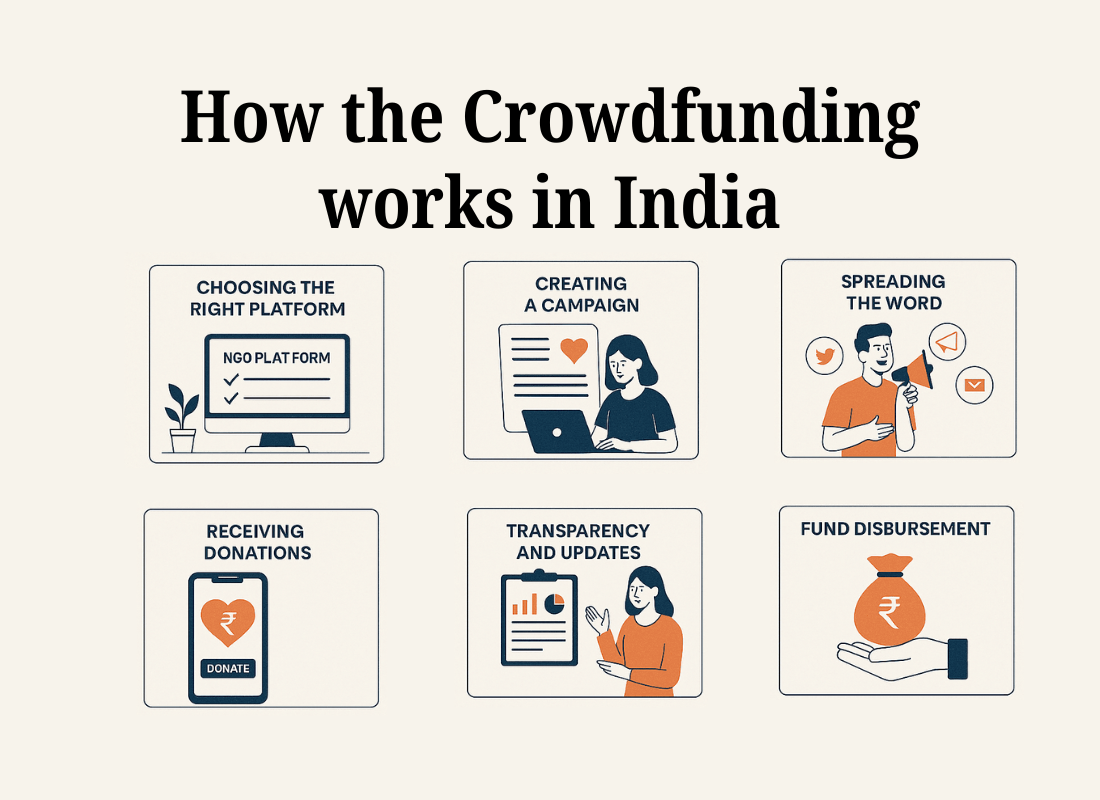
How the Crowdfunding System Works in India 🇮🇳
Crowdfunding has emerged as a powerful tool in India for individuals, startups, and nonprofits to raise funds for various causes, from medical emergencies and creative projects to social impact initiatives and business ventures. Instead of relying on a few large investors, crowdfunding pools small contributions from a large number of people online. Here’s a breakdown of how the crowdfunding system generally works in India:
1. The Idea and the Platform 🤔
It all starts with an individual, team, or organization with a compelling idea or need that requires funding. They then choose a crowdfunding platform that aligns with their goals. Several popular platforms operate in India, each with its own focus (e.g., impact, creative, medical), fee structure, and community. Aidfy.org, for instance, focuses on social impact and charitable causes.
2. Creating a Campaign ✍️
The next step involves creating a detailed and engaging campaign page on the chosen platform. This typically includes:
- A compelling story: Explaining the purpose of the fundraising and why it matters.
- A clear funding goal: Specifying the exact amount needed and how it will be used.
- Visuals: High-quality images and videos to make the campaign more appealing.
- Rewards (optional): Offering incentives to donors based on their contribution amount (common for creative and entrepreneurial projects, less so for charitable causes).
- A defined campaign duration: Setting a timeframe for fundraising.
3. Launching and Promoting the Campaign 🚀
Once the campaign page is ready, it’s launched publicly. The success of a campaign heavily relies on promotion and outreach. This involves:
- Sharing on social media: Utilizing platforms like Facebook, Instagram, Twitter, and LinkedIn.
- Reaching out to personal networks: Contacting friends, family, colleagues, and acquaintances.
- Email marketing: Sending updates and appeals to relevant contacts.
- Public relations: Engaging with media outlets if the cause is newsworthy.
- Utilizing the platform’s built-in sharing tools.
4. Receiving Contributions and Engagement ❤️
As people discover the campaign, they can make online contributions through the crowdfunding platform’s secure payment gateway. Donors typically receive updates on the campaign’s progress. Engagement is crucial; responding to comments, answering questions, and posting regular updates helps build trust and encourages further support.
5. Reaching the Goal and Receiving Funds 🥳
If the campaign successfully reaches its funding goal within the specified timeframe, the funds are typically disbursed to the campaigner by the platform after deducting any applicable fees. The terms for receiving funds (e.g., all-or-nothing vs. keep-what-you-raise) vary depending on the platform and campaign type.
6. Utilizing Funds and Providing Updates 🙏
After receiving the funds, the campaigner is responsible for utilizing them as intended and providing updates to the donors about the progress and impact of their contributions. This transparency builds trust and encourages future support.
Regulations and Considerations in India 🤔
While crowdfunding is gaining popularity, it’s important to note that the regulatory landscape in India is still evolving. There are guidelines and regulations, particularly for investment-based crowdfunding. For donation-based and reward-based crowdfunding, general legal frameworks related to online transactions and fraud apply. It’s crucial for both campaigners and donors to choose reputable platforms and be aware of potential risks.
Overall, crowdfunding offers a democratized approach to fundraising in India, empowering individuals and organizations to bring their ideas to life and support causes they believe in. Platforms like Aidfy.org play a vital role in connecting those in need with a community of givers.

